Complete Solutions to SECTION - II of chapter SELF ASSESSMENT PAPER 4 of Class 10 book with complete answers and questions
| Class 10 | BIOLOGY |
| Chapter | SELF ASSESSMENT PAPER 4 |
| OSWAL | SECTION - II |
| Number Of Questions | 57 |
| Academic Year | 2023-24 |
The diagram below represents a structure found in a leaf. Study the same and answer the questions which follow:

Name the parts labelled A and B.
View SolutionThe diagram below represents a structure found in a leaf. Study the same and answer the questions which follow:

What is the biological term for the above structure?
View SolutionThe diagram below represents a structure found in a leaf. Study the same and answer the questions which follow:

What is the function of the part labelled A?
View SolutionThe diagram below represents a structure found in a leaf. Study the same and answer the questions which follow :

Mention two structural features of A which help in the function mentioned in (iii) above.
View SolutionThe diagram below represents a structure found in a leaf. Study the same and answer the questions which follow:
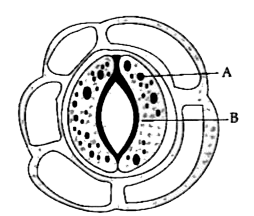
Where is this structure likely to be found in a leaf?
View SolutionThe diagram given below represents a structure found In a leaf.
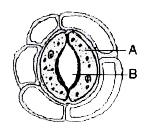
Study the same and answer the questions that follow:
The above structure helps in the process of transpiration. Explain the term transpiration.
View SolutionThe diagram given below represents a structure found In a leaf.
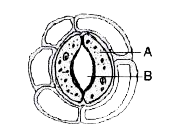
Study the same and answer the questions that follow:
How many other cells are found surrounding this structure as seen In the diagram.
View SolutionStudy the diagrams given below and answer the questions tht follow:
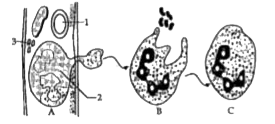
Name the cells labelled 1,2 and 3
View SolutionStudy the diagrams given below and answer the questions tht follow:
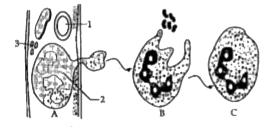
Identify the phenomenon occurring in A. Explain the phenomenon.
View SolutionStudy the diagrams given below and answer the questions tht follow:

Mention two structural differences between 1 and 2
View SolutionStudy the diagrams given below and answer the questions that follow:
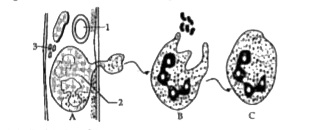
Name the process occurring in B and C.
View SolutionStudy the diagrams given below and answer the questions that follow:
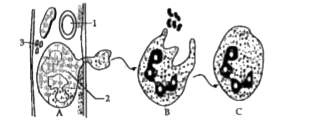
State the importance of this process in the human body.
View SolutionGiven below is a diagram of a double helical structure of DNA.
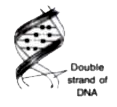
Name the four nitrogenous bases that form a DNA molecule.
View SolutionGiven below is a diagram of a double helical structure of DNA.
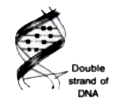
Give the full form of DNA.
View SolutionGiven below is a diagram of a double helical structure of DNA.
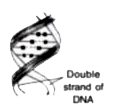
Name the unit of strand of DNA heredity.
View SolutionGiven below is a diagram of a double helical structure of DNA.

Mention two points of difference between Mitosis and Meiosis.
View SolutionGiven below is a diagram of the double helical structure of DNA.
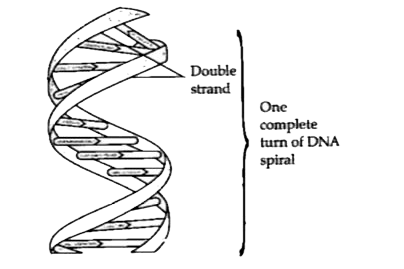
Who gave the double helical model to explain the structure of DNA ?
View SolutionGiven below is a diagram of the cell as seen under the microscope after having been placed in a solution.
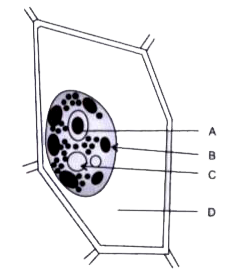
What is the technical term used for the state/condition of the cell shown above?
View SolutionGiven below is a diagram of the cell as seen number the microscope after having been placed in a solution.

Give the technical term for the solution in which the cell was placed.
View SolutionGiven below is a diagram of the cell as seen number the microscope after having been placed in a solution.
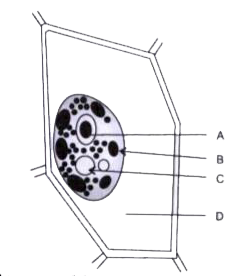
Name the parts numbered A to
View SolutionStudy the diagram given below and answer the questions that follow :

Is the given structure-an animal cell or a plant cell? Give reason in support of your answer.
View SolutionGiven below is a diagram of the cell as seen under the microscope after having been placed in a solution.

What is the technical term used for the state/condition of the cell shown above?
View SolutionThe diagram given below is an experiment conducted to study a factor necessary for photosynthesis Observe the diagram and then answer the following questions
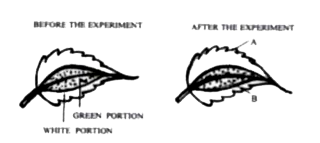
What is the aim of the experiment
View SolutionThe diagram given below is an experiment conducted to study a factor necessary for photosynthesis Observe the diagram and then answer the following questions
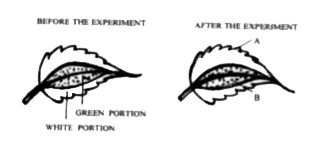
Name the test performed on the leaf and the solution used for the test
View SolutionThe diagram given below is an experiment conducted to study a factor necessary for photosynthesis Observe the diagram and then answer the following questions

What type of leaf was used for the experiment? Give an example
View SolutionThe diagram given below is an experiment conducted to study a factor necessary for photosynthesis Observe the diagram and then answer the following questions
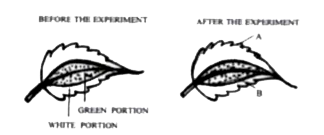
What is the expected result of the above test on the parts labelled A and B ?
View SolutionThe diagram given below is an experiment conducted to study a factor necessary for photosynthesis Observe the diagram and then answer the following questions
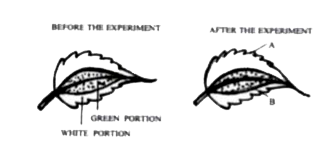
Give a balanced chemical equation to represent the process of photosynthesis
View SolutionBriefly explain the following:
Reflex action
View SolutionDefine the following:
Diapedesis
View SolutionExplain the following term :
Turgidity
View SolutionExplain the following term :
Bleeding
View SolutionDefine the following term : Cataract
View SolutionStudy the diagram given below and then answer the questions that follow :
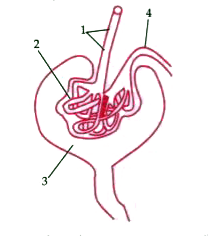
Name the region in the kidney where the above structure is present.
View SolutionStudy the diagram given below and then answer the questions that follow :

Name the parts labelled 1, 2, 3 and 4.
View SolutionStudy the diagram given below and then answer the questions that follow :
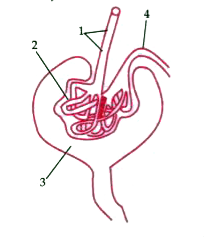
Name the stages involved in the formation of urine.
View SolutionStudy the diagram given below and then answer the questions that follow :
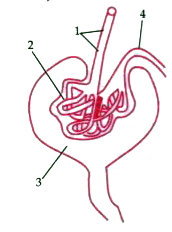
What is the technical term given to the process occurring in 2 and 3 ? Briefly describe the process.
View SolutionStudy the diagram given below and answer the following questions:
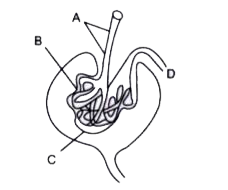
What is the collective term used for B + C?
View SolutionComment upon the following :
Wilted lettuce becomes crisp/firm when placed in cold water for a while .
View SolutionAccount for the following:
One feels blinded for a short time while coming out of a dark room.
View SolutionComment upon the following :
The leaves of plants roll up on a bright sunny day.
View SolutionGive specific/biological reasons for the following statements.
A person after consuming alcohol walks clumsily.
View SolutionGive reason for the following
Sleeping under a tree at night is not advisable
View SolutionGiven below the simplified pathway of the circulatory system of man:
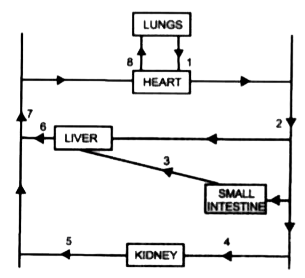
Name the blood vessels labelled 1. 3. 6. and 7.
View SolutionGiven below the simplified pathway of the circulatory system of man:
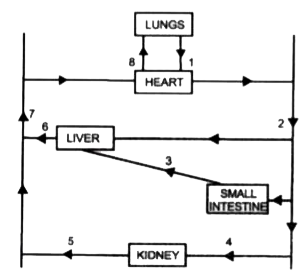
Name the blood vessel that supplies the walls of the heart with oxygen.
View SolutionGiven below the simplified pathway of the circulatory system of man:

Draw a neat labelled diagram of the blood vessel numbered 2' as seen in a cross-section.
View SolutionGiven below the simplified pathway of the circulatory system of man:

Mention one structural difference between blood vessels numbered 4 and 5
View SolutionThe diagram below represents the simplified pathway of the circulation of blood. Study the same and answer the questions that follow :
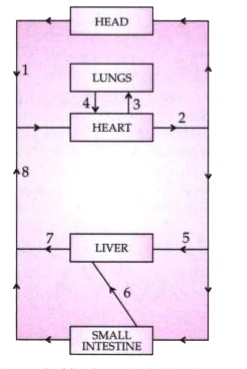
Draw a diagram of the different blood cells as seen in a smear of human blood.
View SolutionGiven below is the outline of the human body showing the important glands:
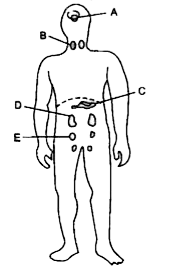
Name the glands marked A to E.
View SolutionGiven below is the outline of the human body showing the important glands:
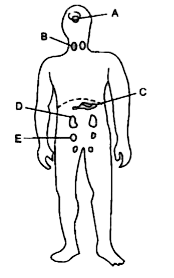
Name the hormone secreted by part B. Give one important function of this hormone.
View SolutionGiven below is the outline of the human body showing the important glands:

Name the endocrine part of the numbered C.
View SolutionGiven below is an outline of the human body showing the important glands.

Name the hormone secreted by part D. Give one important function of this hormone
View SolutionGiven below is an outline of the human body showing the important glands.
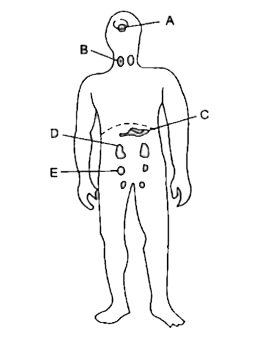
Name the hormone which maintains glucose level in blood.
View SolutionState Mendel's law of Independent assortment.
View SolutionA homozygous tall plant (T) bearing red coloured ( R ) flowers is crossed with a homozygous dwarf (t) plant bearing white (r) flowers :
Give the genotype and phenotype of the plants of `F_1` generation.
View SolutionA homozygous tall plant (T) bearing red coloured ( R ) flowers is crossed with a homozygous dwarf (t) plant bearing white (r) flowers :
Mention the possible combinations of the gametes that can be obtained from the F1 hybrid plant.
View SolutionA homozygous tall plant (T) bearing red coloured ( R ) flowers is crossed with a homozygous dwarf (t) plant bearing white (r) flowers :
Give the genotype and phenotype of the plants of `F_1` generation.
View SolutionComplete the following table by filling in the blanks from 1 to 10 with appropriate terms:

View Solution
SECTION - II questions and complete solutions for chapter SELF ASSESSMENT PAPER 4 of EVERGREEN BIOLOGY (ENGLISH) of Class 10